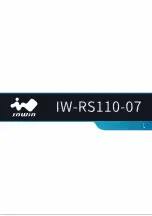
1-2
Cisco ASA Series CLI Configuration Guide
Appendix 1 Addresses, Protocols, and Ports
IPv4 Addresses and Subnet Masks
•
Class B addresses (128.0.xxx.xxx through 191.255.xxx.xxx) use the first two octets as the network
prefix.
•
Class C addresses (192.0.0.xxx through 223.255.255.xxx) use the first three octets as the network
prefix.
Because Class A addresses have 16,777,214 host addresses, and Class B addresses 65,534 hosts, you can
use subnet masking to break these huge networks into smaller subnets.
Private Networks
If you need large numbers of addresses on your network, and they do not need to be routed on the
Internet, you can use private IP addresses that the Internet Assigned Numbers Authority (IANA)
recommends (see RFC 1918). The following address ranges are designated as private networks that
should not be advertised:
•
10.0.0.0 through 10.255.255.255
•
172.16.0.0 through 172.31.255.255
•
192.168.0.0 through 192.168.255.255
Subnet Masks
A subnet mask lets you convert a single Class A, B, or C network into multiple networks. With a subnet
mask, you can create an extended network prefix that adds bits from the host number to the network
prefix. For example, a Class C network prefix always consists of the first three octets of the IP address.
But a Class C extended network prefix uses part of the fourth octet as well.
Subnet masking is easy to understand if you use binary notation instead of dotted decimal. The bits in
the subnet mask have a one-to-one correspondence with the Internet address:
•
The bits are set to 1 if the corresponding bit in the IP address is part of the extended network prefix.
•
The bits are set to 0 if the bit is part of the host number.
Example 1:
If you have the Class B address 129.10.0.0 and you want to use the entire third octet as part
of the extended network prefix instead of the host number, then you must specify a subnet mask of
11111111.11111111.11111111.00000000. This subnet mask converts the Class B address into the
equivalent of a Class C address, where the host number consists of the last octet only.
Example 2:
If you want to use only part of the third octet for the extended network prefix, then you must
specify a subnet mask like 11111111.11111111.11111000.00000000, which uses only 5 bits of the third
octet for the extended network prefix.
You can write a subnet mask as a dotted-decimal mask or as a /
bits
(“slash
bits
”) mask. In Example 1,
for a dotted-decimal mask, you convert each binary octet into a decimal number: 255.255.255.0. For a
/
bits
mask, you add the number of 1s: /24. In Example 2, the decimal number is 255.255.248.0 and the
/bits is /21.
You can also supernet multiple Class C networks into a larger network by using part of the third octet
for the extended network prefix. For example, 192.168.0.0/20.
This section includes the following topics:
•
Determining the Subnet Mask, page 1-3
•
Determining the Address to Use with the Subnet Mask, page 1-3
Summary of Contents for 5505 - ASA Firewall Edition Bundle
Page 28: ...Glossary GL 24 Cisco ASA Series CLI Configuration Guide ...
Page 61: ...P A R T 1 Getting Started with the ASA ...
Page 62: ......
Page 219: ...P A R T 2 Configuring High Availability and Scalability ...
Page 220: ......
Page 403: ...P A R T 2 Configuring Interfaces ...
Page 404: ......
Page 499: ...P A R T 2 Configuring Basic Settings ...
Page 500: ......
Page 533: ...P A R T 2 Configuring Objects and Access Lists ...
Page 534: ......
Page 601: ...P A R T 2 Configuring IP Routing ...
Page 602: ......
Page 745: ...P A R T 2 Configuring Network Address Translation ...
Page 746: ......
Page 845: ...P A R T 2 Configuring AAA Servers and the Local Database ...
Page 846: ......
Page 981: ...P A R T 2 Configuring Access Control ...
Page 982: ......
Page 1061: ...P A R T 2 Configuring Service Policies Using the Modular Policy Framework ...
Page 1062: ......
Page 1093: ...P A R T 2 Configuring Application Inspection ...
Page 1094: ......
Page 1191: ...P A R T 2 Configuring Unified Communications ...
Page 1192: ......
Page 1333: ...P A R T 2 Configuring Connection Settings and QoS ...
Page 1334: ......
Page 1379: ...P A R T 2 Configuring Advanced Network Protection ...
Page 1380: ......
Page 1475: ...P A R T 2 Configuring Modules ...
Page 1476: ......
Page 1549: ...P A R T 2 Configuring VPN ...
Page 1550: ......
Page 1965: ...P A R T 2 Configuring Logging SNMP and Smart Call Home ...
Page 1966: ......
Page 2059: ...P A R T 2 System Administration ...
Page 2060: ......
Page 2098: ...1 8 Cisco ASA Series CLI Configuration Guide Chapter 1 Troubleshooting Viewing the Coredump ...
Page 2099: ...P A R T 2 Reference ...
Page 2100: ......



































